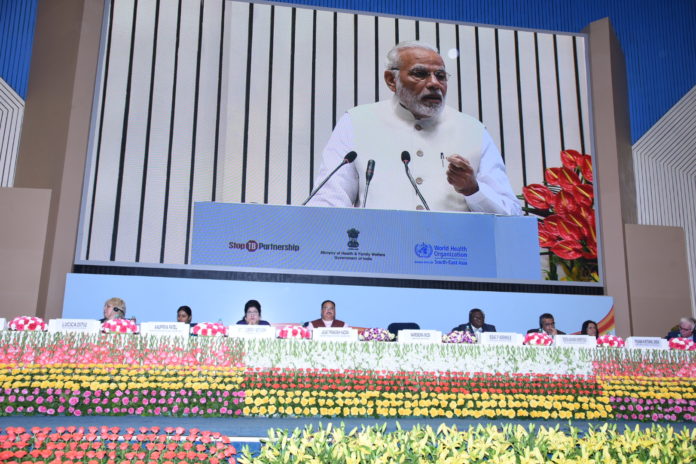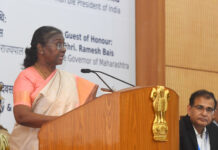
The approval comes well within the target deadline Niti Ayog had fixed of March 31
The Union Cabinet on Wednesday approved the launch of the Ayushman Bharat -National Health Protection Mission (AB-NHPM).
The scheme that was announced in the Union Budget this year has the benefit cover of Rs. 5 lakh per family per year. The target beneficiaries of the proposed scheme will be more than 10 crore families belonging to poor and vulnerable population based on SECC database. AB-NHPM will subsume the on-going centrally sponsored schemes -RashtriyaSwasthyaBimaYojana (RSBY) and the Senior Citizen Health Insurance Scheme (SCHIS).
The idea behind the scheme is to reduce impoverishment because of health expenditure. In-patient hospitalization expenditure in India has increased nearly 300% during last ten years. (NSSO 2015). More than 80% of the expenditure are met by out of pocket (OOP). Rural households primarily depended on their ‘household income / savings’ (68%) and on ‘borrowings’ (25%), the urban households relied much more on their ‘income / saving’ (75%) for financing expenditure on hospitalizations, and on ‘borrowings’ (18%). (NSSO 2015). Out of pocket (OOP) expenditure in India is over 60% which leads to nearly 6 million families getting into poverty due to catastrophic health expenditures.
In-patient hospitalization expenditure in India has increased nearly 300% during last ten years. (NSSO 2015). More than 80% of the expenditure are met by out of pocket (OOP)
The cover will take care of almost all secondary care and most of tertiary care procedures. To ensure that nobody is left out (especially women, children and elderly) there will be no cap on family size and age in the scheme. The benefit cover will also include pre and post-hospitalisation expenses. All pre-existing conditions will be covered from day one of the policy. A defined transport allowance per hospitalization will also be paid to the beneficiary.
Benefits of the scheme are portable across the country and a beneficiary covered under the scheme will be allowed to take cashless benefits from any public/private empanelled hospitals across the country.
AB-NHPM will be an entitlement based scheme with entitlement decided on the basis of deprivation criteria in the SECC database, The different categories in rural area include
- Families having only one room with kucha walls and kucharoof; families having no adult member between age 16 to 59
- Female headed households with no adult male member between age 16 to 59
- Disabled member and no able bodied adult member in the family
- SC/ST households
- Landless households deriving major part of their income from manual casual labour,
To control costs, the payments for treatment will be done on package rate (to be defined by the Government in advance) basis. The package rates will include all the costs associated with treatment. For beneficiaries, it will be a cashless, paper less transaction. Keeping in view the State specific requirements, States/ UTs will have the flexibility to modify these rates within a limited bandwidth. Beneficiaries can go to empanelled hospitals in the public and the private sector.
AB-NHPM will have major impact on reduction of Out Of Pocket (OOP) expenditure on ground of:
- i) Increased benefit cover to nearly 40% of the population, (the poorest&the vulnerable)
- ii) Covering almost all secondary and many tertiary hospitalizations. (except a negative list)
iii) Coverage of 5 lakh for each family, (no restriction of family size)
This will lead to increased access to quality health and medication. In addition, the unmet needs of the population which remained hidden due to lack of financial resources will be catered to. This will lead to timely treatments, improvements in health outcomes, patient satisfaction, improvement in productivity and efficiency, job creation thus leading to improvement in quality of life.
Expenditure involved:
The expenditure incurred in premium payment will be shared between Central and State Governments in specified ratio as per Ministry of Finance guidelines in vogue. The total expenditure will depend on actual market determined premium paid in States/ UTs where AB-NHPM will be implemented through insurance companies. In States/ UTs where the scheme will be implemented in Trust/ Society mode, the central share of funds will be provided based on actual expenditure or premium ceiling (whichever is lower) in the pre-determined ratio.
Number of Beneficiaries:
AB-NHPM will target about 10.74 crore poor, deprived rural families and identified occupational category of urban workers’ families as per the latest Socio-Economic Caste Census (SECC) data covering both rural and urban. The scheme is designed to be dynamic and aspirational and it would take into account any future changes in the exclusion/ inclusion/ deprivation/ occupational criteria in the SECC data.
States/Districts covered:
AB-NHPM will be rolled out across all States/UTs in all districts with an objective to cover all the targeted beneficiaries.
Background:
RSBY was launched in the year 2008 by the Ministry of Labour and Employment and provides cashless health insurance scheme with benefit coverage of Rs. 30.000/- per annum on a family floater basis [for 5 members], for Below Poverty Line (BPL) families, and 11 other defined categories of unorganised workers. To integrate RSBY into the health system and make it a part of the comprehensive health care vision of Government of India, RSBY was transferred to the Ministry of Health and Family Welfare (MoHFW) w.e.f 01.04.2015. During 2016-2017, 3.63 crore families were covered under RSBY in 278 districts of the country and they could avail medical treatment across the network of 8,697 empanelled hospitals. The NHPS comes in the backdrop of the fact that various Central Ministries and State/UT Governments have launched health insurance/ protection schemes for their own defined set of beneficiaries. There is a critical need to converge these schemes, so as to achieve improved efficiency, reach and coverage.














[…] the final draft of Modicare is yet to be established, some are reporting that the scheme will cover pre-existing conditions, as well as pre and post-hospi… If this is achieved, the programme could considerably bring down out of pocket expenditure among […]
Comments are closed.